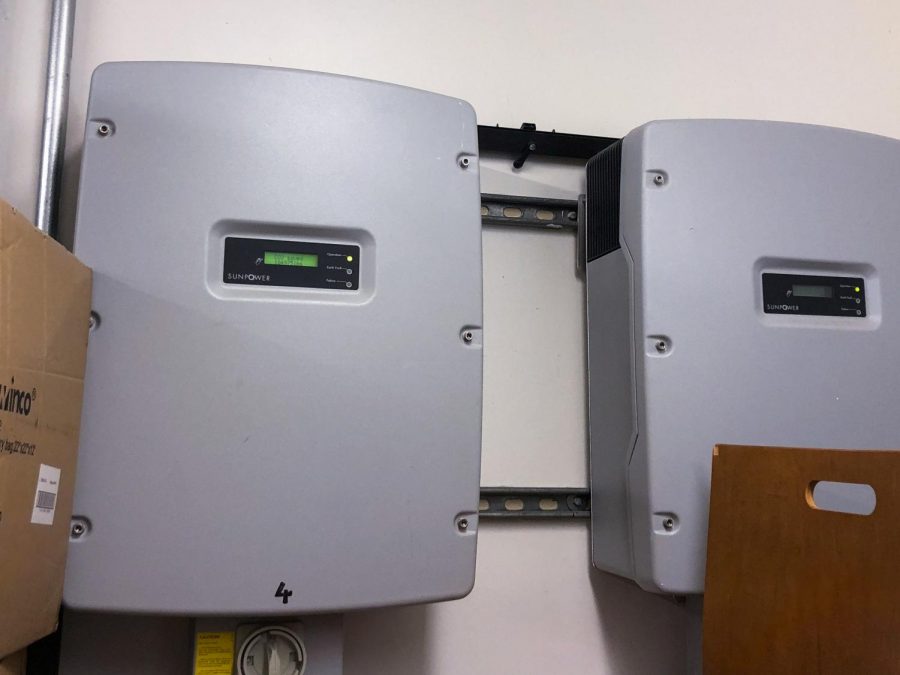Branson begins conversations about expanding solar power
March 29, 2021
Branson has begun discussions of expanding its solar power and installing backup batteries in the coming years, with a goal of becoming more efficient and adaptable to a changing environment.
The factors that have influenced the project include power outages, long-term financial savings and environmental stewardship.
“The conversation of backup batteries started when we first had a public safety power shutoff a couple of years ago,” said David Schneider, director of facilities. “PG&E shut off the power, and we had to cancel school for a couple of days or so. …That really crippled us.”
While Branson may not implement auxiliary backup battery power in the immediate future, it will investigate the issue over summer 2021.
“We have to go through an assessment process [this summer] to figure out what we really need for the campus long term, what’s going to be most optimal, how much it’s going to cost, and then how we can afford it,” said David Hanson, chief financial and operating officer. “Our timeline is a bit uncertain, but I am hoping to have a plan in place by late summer or fall.”
The primary concern and limiting factor with solar power and backup batteries is the high up-front installation cost, which leads to short-term financial strain.
“We are working with some very generous donors who have stepped forward and said they would like to help us with this,” Hanson said.
Branson is also looking into alternative sources of financing.
“With solar, you can enter into a Power Purchasing Agreement with another entity where you share in the costs of outfitting the campus, and down the road, you share in the energy that is created,” Hanson said.
A long-term reason to expand Branson’s solar is financial savings over time.
“If we do this project well, with a long-term vision in mind, we can actually significantly reduce our power bills,” he said. “If we can reduce our utility bill and we can keep that reduction going for another 20 years [through the use of solar panels], it benefits … everyone that comes through Branson during that time. … To the extent that we lower our costs, we can keep tuition low.”
Southern facing buildings make good candidates for solar panels because of their exposure to the sun.
“There are a good number of buildings where it makes financial sense to install solar. The biggest one would be the Res,” said Schneider.
Branson is taking inspiration from other schools that have become cost-effective through solar power.
For example, Mark Day School, a K-8 school in San Rafael, has implemented solar power on their campus. In 2019, it became “the first school project to achieve LEED Platinum in San Rafael and one of only three in all of Marin County,” according to the school website.
According to the school website, LEED certification allows for “cost-effective buildings … and savings from increased building value and decreased utility costs.”
“[Mark Day] has dropped their utility bill by 30-40 percent [after doing a similar project]. That gives you a sense of what we could strive for,” said Hanson.
Power outages have become increasingly problematic over the past four years, as a result of the wildfires that have plagued the West Coast. The ensuing planned power outages and loss of power have required schools to shut down periodically.
According to a 2019 article from Edsource.org, “planned power outages and fires closed 1,510 schools, serving more than 587,000 students, between Oct. 23 and Nov. 1 [of 2019].”
A couple of years ago, Branson lost all electrical power due to a PSPS. That included loss of power to the kitchen.
“One thing that really caught our attention was that we almost lost $5,000 worth of food in the walk-in refrigerator and freezer,” said Schneider. “[After that,] we looked into backup natural gas generators and also looked into backup batteries.”
But, due to high costs, rapidly changing technology, and the sheer number of buildings on campus, batteries are not likely to be installed throughout the whole school.
“We touched upon backing up the Commons or the gym, a larger place where, in an emergency … we would still have power for minimal lighting and to power devices,” said Schneider.
Backup batteries are not currently at the forefront of the discussion, but may become more relevant with solar expansion.
“Moving forward, there is a lot of talk of expanding our solar and talking to people and experts and companies. It could be that when we expand solar on campus … maybe it does make sense to install some battery backup,” Schneider said.
Because the plan is so huge and expensive, it will take time before solar or auxiliary power is actually installed.
“We are still a bit away from putting solar panels on buildings,” said Hanson. “It’s a bit of a balancing act. We have spent almost $900K on unexpected COVID expenses, and we don’t know what the year ahead may hold for Branson. So we need to make sure that we balance the possibility of continued unexpected costs with other needs.”
But according to Schneider, current freshmen will likely see, to some degree, the expansion of solar while they are students at Branson.
Environmental stewardship is also a consideration as Branson plans the solar expansion project.
“We want to do what’s right for the school today and tomorrow, but we also want to be thinking about what the environmental impact will be of our decisions today and tomorrow for the future,” Hanson said.





